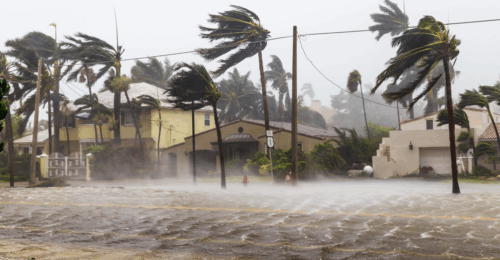Wood may be one of the easiest products to connect back to the environment. Behind most wood products you see at The Home Depot, there are forests. For products made by Mendocino Redwood Company (MRC), those forests are carefully managed with two goals in mind: sustainability and productivity.
Balancing sustainability and productivity means managing both the forest and the trees and maintaining a deep appreciation for natural history and process. One such process is fire. While small, controlled burns are naturally occurring and beneficial to forests, we’ve all seen the devastation that out-of-control wildfires produce. MRC recognizes that sustainable forests are wildfire resilient forests. With approximately 350 square miles (228,800 acres) of forestland under MRC management, fire management is a big part of their business.
Prior to European settlement, the forests of California averaged approximately 50 trees per acre. This level of tree stocking was sustained through natural wildfires ignited by lightning and Native American burning. The fires were common, removing brush and small trees, and burned with low intensity. After a century of fire suppression, California forests average 300 to 400 trees per acre, adding an unsustainable fuel load to the forests. This buildup of fuel is one of the main drivers for out-of-control wildfires.

Mendocino and Humboldt Redwood Companies own 440,000 acres of redwood and Douglas fir forest in California. The forests are managed by selectively harvesting individual trees, similar to fires that occurred prior to fire-suppression activities. This management technique can help create a wildfire-resilient forest by spacing trees closer to natural levels. How do we know? Because lightning-caused wildfires have occurred after MRC’s forests have been managed in this fashion. The photo below shows a forest, which was thinned in 1999 and subsequently experienced a lightning-ignited wildfire in 2008. Notice that the fire mainly burned the understory of the forest. Similar treatments of forests in other parts of the state have been tested by wildfire resulting in similar outcomes. MRC’s efforts to create wildfire resilient forests helps to achieve a sustainable source of forest products for the long term.

There are many other co-benefits of managing a forest in this fashion. The forests of the world sequester significant amounts of carbon from the atmosphere, but they have to be alive to do so. Wildfire-resilient forests can continue to be carbon sinks and aid in global efforts to fight climate change. Forests managed in this fashion also maintain wildlife habitat for various species, some of which are listed as threatened or endangered. Water quality is also maintained as the forest is able to quickly provide ground cover in the form of needles and branches, which prevents erosion. These practices can also help control wildfires. When wildfires stay on the ground, firefighters can directly attack a fire to keep them smaller, producing less smoke in the air and protecting nearby communities. Lastly, outdoor recreation is maintained, as there is a forest to come back to after a wildfire event.

Mendocino and Humboldt Redwood Companies were formed with the publicly declared mission to operate at a high level of environmental stewardship and at the same time run a successful business. They seek to be an example of forest restoration that creates a positive, economically successful example of how private forest management can protect and restore the ecological attributes of the forest. Their forestlands are certified by the Forest Stewardship Council® (FSC® C031337) as being well-managed forests.






